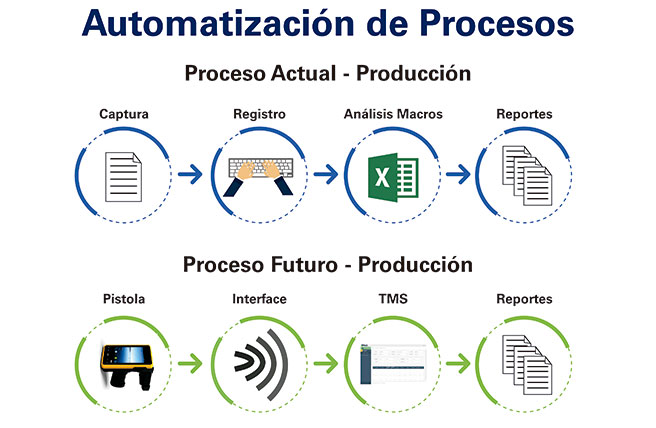By Jorge Pérez, DINET’s Commercial Manager
With the last presidential elections in the United States, there was a transitory rise in commodity prices (19.4%) and then the price of copper fell by 4.75% in line with the correction trend after Trump’s triumph. If we add to this weak Chinese economy’s figures, we see that the future of commodity prices is not more favorable than a few weeks ago. The most visionary companies are always seeking operational excellence in their productive chains. In this sense, in the case of mining, mining contractors have become a key players to fulfill this goal, since, as we all know, a great portion of mining processes are outsourced to mining contractors. This is why in Dinet we permanently seek operational excellence in the services that we provide to mining, through process integration and automation.
One of the most important processes in mining is mineral hauling, which represents approximately 50% of the mine’s costs in superficial mining. Great progress has been made in the follow-up and measurement of hauling and loading processes, and in involved equipment (tippers and excavating machines) that have a GPS and telemetry equipment in real time. This allows to measure productivity and geo-localize costs in all of the mineral loading and hauling phases. One of the best-known products in the market for superficial equipment fleet management is the Dispatch software. There are also versions for underground mining, but this needs equipment investment to implement an underground Wi-Fi network that allows communication between equipment and radio frequency identification (RFID) tags, to geo-localize local equipment underground. In the case of underground mining, hauling represents 15% of costs approximately.
This is obviously a considerable investment for mining and in Peru there are currently no underground mining operations that have this infrastructure. This is why at Dinet we are aware of these opportunities and are implementing a fleet management system for underground equipment management, not in real time but in batch, given that we do not have a Wi-Fi network or RFID tags in the underground mining operations in which we work.
We have developed internally a system for surface equipment management that communicates and sends information through a GPRS signal in real time. In the underground case, information is stored in an internal memory and when equipment arises to the surface the information travels through the servers with Wi-Fi, to produce the respective analysis (batch process). We have automated the underground trips’ control process as follows in Graph 1:

We hope that when this system is 100% operational we will improve our productivity between 5% and 8% in our mining operations’ mineral hauling fleet. We believe that this software represents a medium stage before obtaining real time information, which will happen once we have the necessary underground communication infrastructure. This system can be easily scaled to work with a Wi-Fi network and RFID tags.
With this tool we can measure the hauling process, identify the productivity per shift, per operator, as well as non-productive time. Also, at the beginning of each shift the vehicle and journey allocation is uploaded into the system in each underground loading point. This work plan (budgeted) is compared with the executed work to analyze deviations and optimize them.
This Dinet initiative is in line with our permanent improvement and cost optimization goal for our clients’ logistic chain, as we are permanently seeking operational excellence.